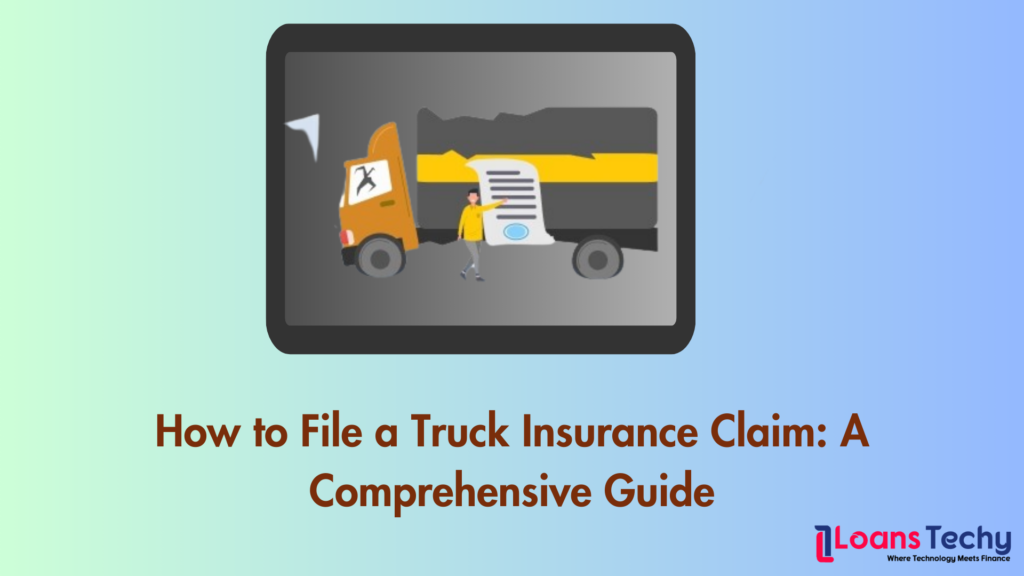Filing a truck insurance claim is like navigating a road full of twists and turns—you need the right map to reach your destination smoothly. This guide is your GPS through the complexities of filing a claim, ensuring you understand each step clearly. Whether you’re facing a fender-bender or a major accident, knowing how to handle your insurance claim can make a world of difference in getting back on the road quickly and hassle-free.

Understanding Truck Insurance Claims
Before diving into the specifics of filing a claim, it’s important to grasp the basics of truck insurance. Truck insurance typically covers damages and liabilities arising from accidents, theft, vandalism, and natural disasters. Policies can vary widely, so familiarize yourself with the coverage details provided by your insurer. Understanding your policy upfront will help you navigate the claim process more effectively.
Step-by-Step Guide to Filing a Truck Insurance Claim
1. Assess the Situation
First things first: take a deep breath. Whether it’s a minor scratch or a major collision, assessing the situation calmly is key. Ensure everyone involved is safe, including yourself and other parties. If medical attention is needed, prioritize that before anything else.
2. Gather Information
Now, it’s time to play detective (minus the magnifying glass). Collect as much information as possible at the scene:
- Driver details: Names, contact information, and insurance details of all involved parties.
- Accident specifics: Date, time, location, and weather conditions.
- Witness accounts: If possible, gather statements and contact information from any witnesses.
3. Document Everything
In the age of smartphones, documenting an incident has never been easier. Take photos and videos of:
- Damage: Capture all angles of damage to your truck and any other vehicles involved.
- Scene: Include road conditions, traffic signals, and any relevant landmarks.
4. Contact Your Insurance Company
Once you’ve gathered all necessary information, it’s time to notify your insurance company. Most insurers have a claims hotline or online portal for reporting accidents. Provide them with:
- Details: Briefly explain what happened and the extent of damages.
- Documentation: Upload or send photos and any witness statements you collected.
5. Await Adjuster Assessment
After filing your claim, an insurance adjuster will be assigned to evaluate the damages. They may schedule an inspection of your truck and review the evidence you submitted. Be prepared to answer questions about the incident and provide additional information as needed.
6. Review and Negotiate
Once the adjuster completes their assessment, you’ll receive a claim settlement offer. Review it carefully to ensure it covers all necessary repairs and expenses. Don’t hesitate to negotiate if you feel the offer is insufficient. Remember, you’re entitled to fair compensation under your policy.
7. Authorize Repairs
Once you’ve agreed on a settlement, authorize the repair shop of your choice to begin work on your truck. Your insurer may have preferred repair facilities or guidelines regarding where repairs can be done. Keep receipts and invoices for all repairs and expenses incurred.
8. Follow Up
Even after repairs are completed, stay in touch with your insurer. Ensure all bills are settled and any deductible payments are clear. Document every interaction for your records and keep copies of all correspondence related to your claim.
Also Read:
Frequently Asked Questions (FAQs)
Q: What should I do immediately after an accident?
A: First, ensure everyone’s safety, then gather driver details, document the scene, and contact your insurance company as soon as possible.
Q: How long do I have to file a truck insurance claim?
A: It varies by insurer, but it’s best to file as soon as possible after the incident to avoid any complications.
Q: Will filing a claim increase my insurance premiums?
A: It can, depending on the circumstances and your insurer’s policies. However, many policies offer accident forgiveness or other options to mitigate premium increases.
Q: What if the other party is at fault but uninsured?
A: Your uninsured motorist coverage may help cover damages in such cases. Consult your insurer for specific details.
Conclusion
Filing a truck insurance claim doesn’t have to be as intimidating as a steep mountain pass. With thorough preparation and understanding of the process, you can navigate through it smoothly. Remember to stay organized, document everything meticulously, and communicate effectively with your insurer. By following this guide, you’ll be well-equipped to handle any bumps in the road that come your way.
In conclusion, whether you’re a seasoned truck driver or new to the profession, knowing how to file a truck insurance claim is a valuable skill. Armed with the information provided here, you can tackle the claim process confidently and efficiently.
This guide aims to simplify the process of filing a truck insurance claim while adding a touch of humor to keep things engaging. If you have any more questions or need further assistance, don’t hesitate to reach out to your insurance provider or a qualified professional. Safe travels!